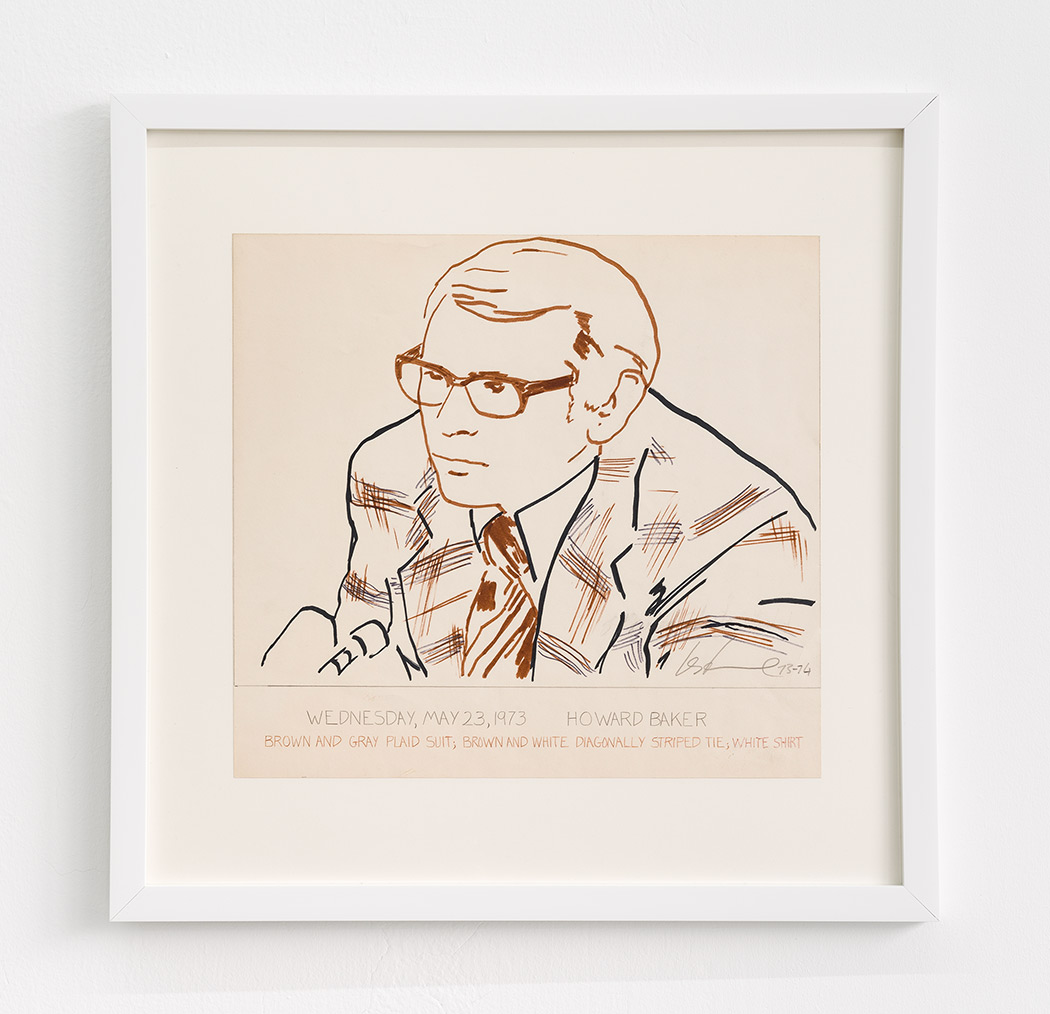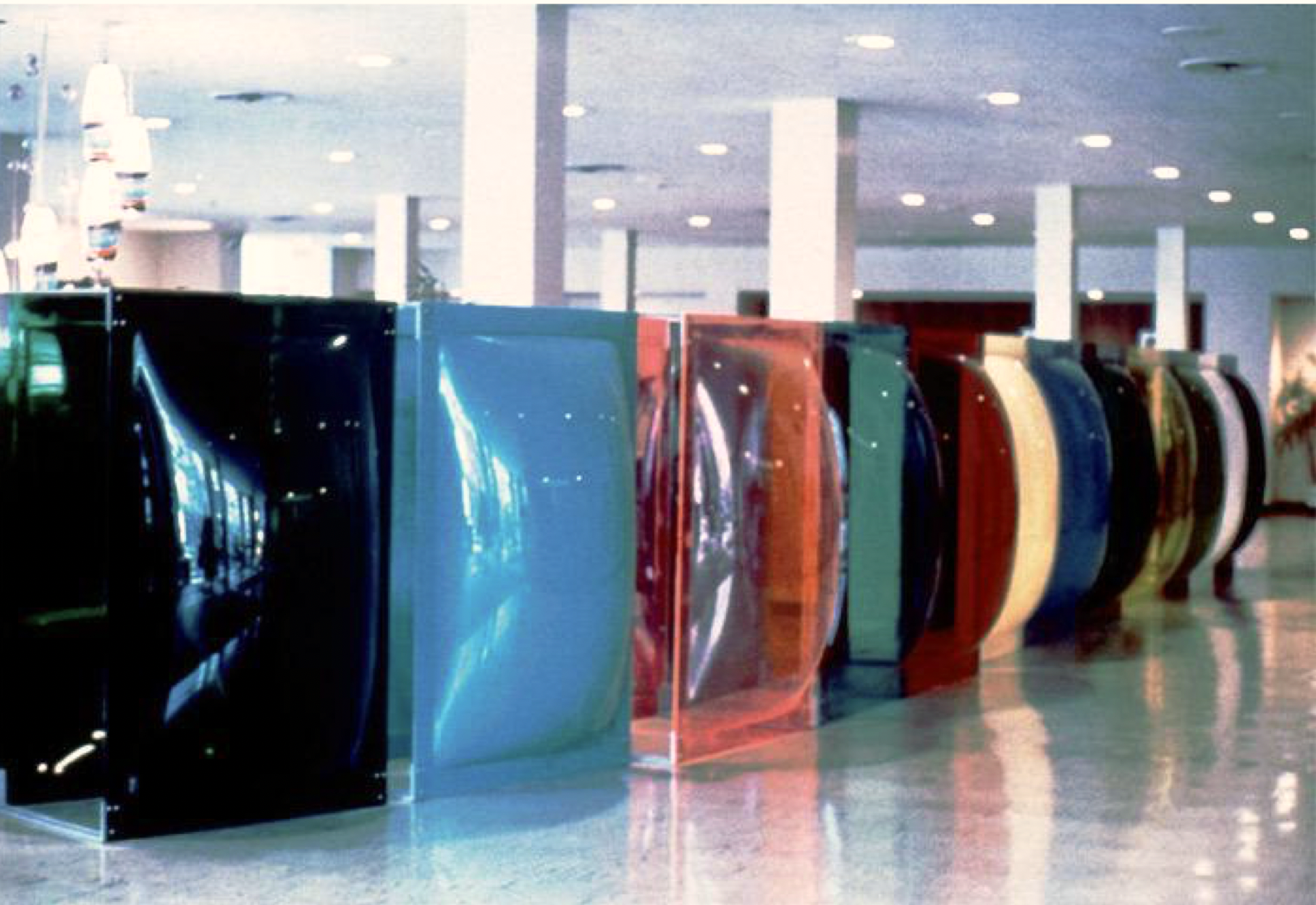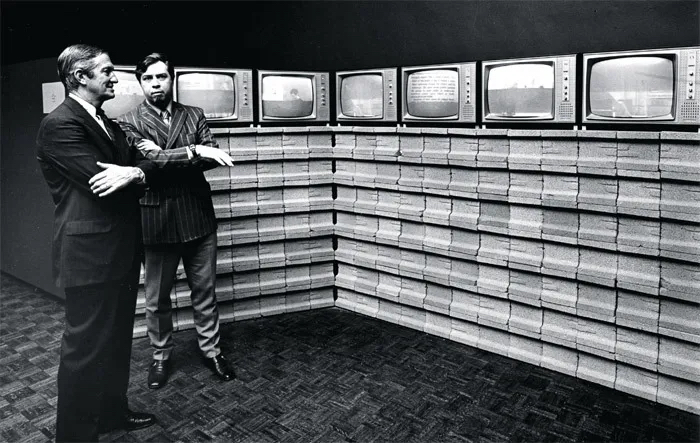Les Levine (b. 1935, Dublin, lives and works in New York) is widely considered an originator of media art, working across an array of disciplines and forms—among them plastic environs, mass-produced objects, disposable art, magazines, video installations, large-scale public art, and Levine’s Restaurant, 1969, a venue that billed itself as New York’s only establishment for “Irish Jewish Canadian cuisine.” In 1966 he made Slipcover, the first major installation work for the Art Gallery of Ontario, and the following year he won first prize in the Canadian Sculpture Biennale for his work All-Star Cast (A Place). Since 1976, he has produced major media campaigns around the world, including We Are Not Afraid, 1981, in the New York subways; Blame God, a series of billboards mounted across London, Derry, and Dublin in 1985–-86 and presented by the Irish Museum of Modern Art in 1994; and Send Receive in Vienna, 1994, for which he received the Gustav Klimt Prize.
Further memorable ventures include his monthly magazine Culture Hero, 1969–70 and the conceptual museum and consultation service the Museum of Mott Art Inc, 1970. Born in Dublin in 1935, Levine studied at the Central School of Arts and Crafts, London, and the New School of Art, Toronto, before establishing himself as a prominent figure in New York conceptual art in the 1960s. A forerunner in media experimentation—his earliest videotapes were produced in 1964 and he developed television installations as early 1968—his work presaged that of a generation of artists working in moving image including Dan Graham and Bruce Nauman. Les Levine’s work is in many international collections. He has taught drawing at Nova Scotia School of Design, Halifax; television production at Wayne Paterson University, New Jersey; communications at New York University, and performance art at Columbia University in New York, where he continues to live and work. Earlier this year, Amsterdam’s Slowscan Records released the LP Game Room—A Tribute to The Great American Loser, which includes a version of Watergate Fashions.
CV
Selected Press
Works
Further memorable ventures include his monthly magazine Culture Hero, 1969–70 and the conceptual museum and consultation service the Museum of Mott Art Inc, 1970. Born in Dublin in 1935, Levine studied at the Central School of Arts and Crafts, London, and the New School of Art, Toronto, before establishing himself as a prominent figure in New York conceptual art in the 1960s. A forerunner in media experimentation—his earliest videotapes were produced in 1964 and he developed television installations as early 1968—his work presaged that of a generation of artists working in moving image including Dan Graham and Bruce Nauman. Les Levine’s work is in many international collections. He has taught drawing at Nova Scotia School of Design, Halifax; television production at Wayne Paterson University, New Jersey; communications at New York University, and performance art at Columbia University in New York, where he continues to live and work. Earlier this year, Amsterdam’s Slowscan Records released the LP Game Room—A Tribute to The Great American Loser, which includes a version of Watergate Fashions.
CV
Selected Press
Works

















